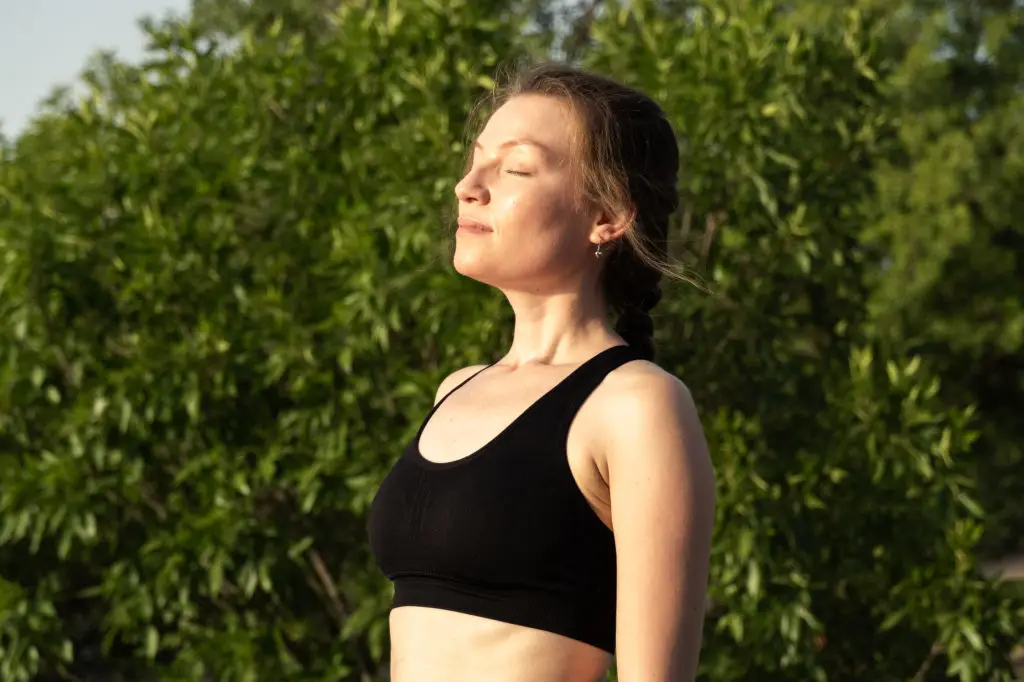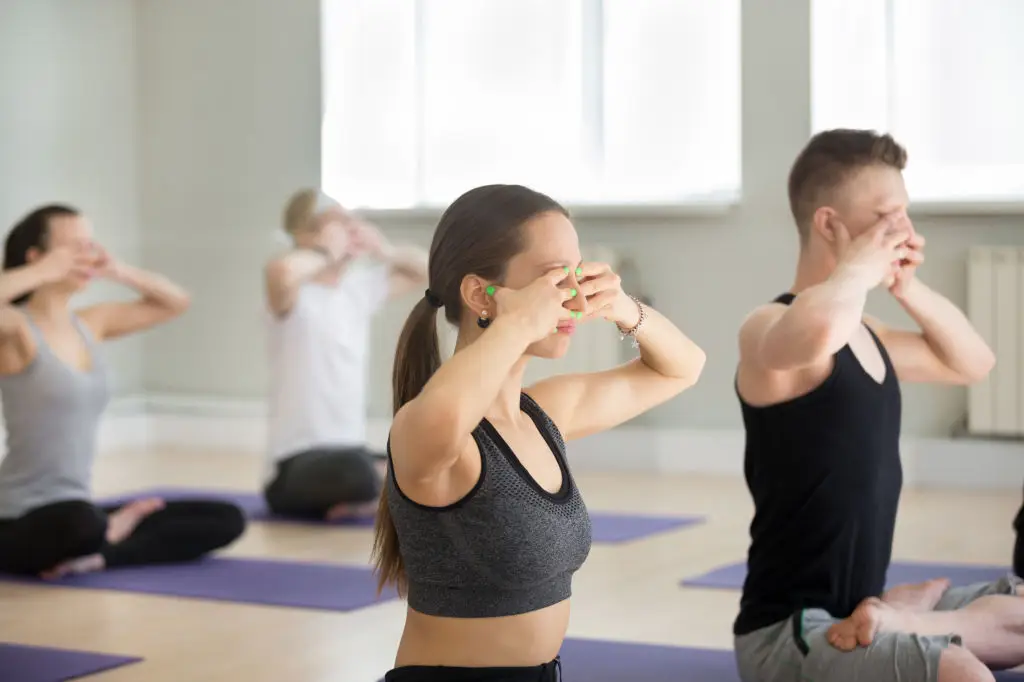11 Breathwork Hacks to Reset Your Vagus Nerve and Find Calm
Feeling quick tension or a racing mind? A simple vagus nerve reset using breathwork can help you downshift fast. The vagus nerve links your brain and many organs and plays a big role in switching your body from "go" to "rest." Breath changes are one of the easiest ways to nudge that switch. This article shares 11 practical breathwork hacks—clear steps you can try anywhere—to encourage parasympathetic tone and a calmer experience. These techniques are chosen for accessibility and safety for most adults. Some are rooted in clinical breathing research and traditional practices. Others are paired with gentle cues like a cool touch to the neck that many people find quickly calming. If you have a serious heart, lung, or neurological condition, check with a clinician before trying more intense holds or rapid progressions. Each numbered section below explains how to do the technique, suggested counts or timing, why it helps the vagus nerve, and simple modifications you can use. Try one or two methods and notice which one lands for you—small consistent experiments usually pay off more than one big effort. Ready to try an instant reset? Start with the first item: diaphragmatic breathing.
1. Diaphragmatic (Belly) Breathing

What it is: Diaphragmatic breathing—often called belly breathing—means using the diaphragm to draw air deep into the lungs. Why it helps: breathing low and slow reduces accessory muscle use and sends calming feedback to the brain via the vagus nerve. How to do it: sit comfortably with one hand on your chest and the other on your belly. Breathe in through your nose for about four to six seconds, feeling the belly rise under your hand. Exhale slowly for six to eight seconds through gently parted lips, letting the belly fall. Repeat this cycle five times to start, then build to two to five minutes as it feels comfortable. Practical tip: if counting feels awkward, follow the physical cues of belly rise and fall instead. A gentle posture—shoulders soft, ribs relaxed—helps air move into the lower lungs. Modifications: if lying down is easier, place a light book on the belly to feel the rise and fall. Benefits you might notice: lower breathing rate, softer jaw, and a sense of grounded attention within a few breaths. For older adults or those with COPD, use shorter counts and consult a clinician for tailored pacing.
2. 4-7-8 Breathing (Relaxing Breath)

What it is: The 4-7-8 pattern is a paced breath with a longer hold and exhale that many people use for fast calming. Why it helps: a longer exhale relative to inhale encourages parasympathetic activation and a slow heart rhythm, pathways linked to vagal tone. How to do it: sit upright or lie down. Inhale gently through the nose for a count of four. Hold the breath for a count of seven. Then exhale completely and audibly through the mouth for a count of eight. That’s one cycle. Start with three to four cycles, and use up to eight as you become comfortable. Practical tip: keep the breaths smooth; no need to force big volumes. If the hold feels too intense, shorten it (for example, 3-4-6) while keeping the extended exhale. Safety note: people with certain heart rhythm or respiratory issues should try a softer version first and check with a clinician. Many people find this pattern helpful to fall asleep or to interrupt an anxious surge when practiced a few times.
3. Box Breathing (Square Breath)

What it is: Box breathing uses equal-length phases—inhale, hold, exhale, hold—to create predictable rhythm. Why it helps: predictable rhythm calms the nervous system by offering a steady signal that the body is safe, often engaging vagal pathways. How to do it: inhale through the nose for a count of four. Hold the breath for four. Exhale through the mouth for four. Pause with an empty lung for four, then repeat. Adjust counts to your comfort, for example 3-3-3-3 if four feels long. Practical tip: use a mental image of tracing a square to guide counts. Start with three cycles and increase to five or six if helpful. Difficulty: beginner-friendly and useful for quick resets at a desk or before a meeting. Keep posture tall but relaxed. If you feel lightheaded, reduce the counts or return to normal breathing until steady. This method is popular with first responders and office workers because it’s discreet and effective for regaining composure.
4. Extended Exhale Focus (Longer Outbreath)

What it is: A simple pattern that emphasizes a longer outbreath compared to the inbreath, for example inhale 4, exhale 6–8. Why it helps: the longer exhale shifts autonomic balance toward calm; exhalation length directly influences vagal activity. How to do it: settle into a comfortable seat. Inhale gently through the nose for a slow count of four. Exhale for a count of six or eight through softly parted lips. Keep the inhale relaxed—don’t force more air than feels natural. Repeat this for one to three minutes and notice the warmth of the exhalation. Practical tip: you can cue the exhale with a soft syllable like “ahhh” or simply let it be silent. Use this one when you need a quick down-regulation—walking slowly and extending the outbreath can be especially soothing. Modify counts if you have breath limitations; even making the exhale slightly longer than the inhale tends to help. This method pairs well with gentle shoulder relaxation and mindful attention to the ribs and belly moving together.
5. Coherent / Resonant Frequency Breathing (≈5–6 Breaths/Minute)

What it is: Coherent breathing aims for a steady, slow rhythm—about five to six breaths per minute—which research links to improved heart rate variability (HRV). Why it helps: breathing at this resonant frequency maximizes baroreflex effectiveness and supports vagal tone, helping the body respond better to stress. How to do it: try a pattern of inhaling five seconds and exhaling five seconds (6 breaths per minute) or inhale six seconds and exhale six seconds (5 breaths per minute). Start with two to three minutes and build gradually. Practical tip: use a timer app or a guided audio to keep even pacing. Many studies looking at HRV use five breaths per minute as a target, but you don’t need instrumentation to benefit—noticeable calm often occurs after a few minutes. Beginners should start shorter and practice daily. If you have dizziness or orthostatic issues, practice sitting and progress slowly. For measurable changes in HRV, regular practice over weeks tends to produce more consistent results than brief one-off sessions.
6. Alternate Nostril Breathing (Nadi Shodhana)

What it is: A yogic practice where you inhale through one nostril and exhale through the other, alternating sides. Why it helps: the rhythmic alternation promotes balance in the nervous system and supports a calmer mental state through paced breath and focused attention. How to do it: sit upright and use your right thumb to gently close the right nostril while inhaling through the left. Close the left nostril with your ring finger and exhale through the right. Inhale through the right, then switch to exhale through the left. Continue for five to ten cycles at a gentle pace. Practical tip: keep the counts even and the breath soft. If you have a blocked nose due to congestion, use gentle nasal clearing or choose another technique until breathing is comfortable. Difficulty: moderate—requires some coordination but many people find it deeply centering once they get the rhythm. For those with high blood pressure, avoid forceful breath; keep it gentle and steady.
7. Humming Breath (Bhramari Pranayama)

What it is: Humming breath adds a low, steady hum or voiced tone on the exhale. Why it helps: the vibration from humming stimulates the vocal cords and nearby vagal pathways, which can produce a calming, resonant effect quickly. How to do it: sit comfortably, take a gentle inhale through the nose, and on the exhale produce a soft humming sound—like a gentle "mmm"—for the full exhale. Keep the eyes closed and do five to ten cycles. Practical tip: placing fingertips lightly over the ears or the face can deepen the sensation of vibration. This practice is low-impact and useful when you want a short grounding break. It’s especially helpful for quieting an overactive mind because the tone becomes an immediate attention anchor. If vocal strain is an issue, keep the hum very soft or try silent vibrations with a focus on throat sensations instead.
8. Pursed-Lip Breathing for Grounding

What it is: A simple method often used to manage breathlessness and slow the outflow of air. Why it helps: by creating gentle resistance during exhale, pursed-lip breathing lengthens the outbreath and supports vagal-mediated calm. How to do it: inhale slowly through the nose for two counts. Purse your lips as if about to whistle and exhale slowly for four to six counts. Repeat this for one to three minutes. Practical tip: keep shoulders relaxed and avoid forcing the breath. This is a practical tool for moments of breathlessness, panic, or when you notice a tight chest. It’s very accessible for older adults and people with mild COPD as a self-regulation strategy; however, those with significant lung disease should practice under medical guidance. Use it discreetly in public—no fanciness required, just two calm inhales and one long exhale.
9. Breath Counting Mini-Meditation

What it is: A short attention practice where you count breaths to anchor the mind. Why it helps: pairing counting with slow belly breathing stabilizes attention and lowers stress hormones by engaging parasympathetic pathways. How to do it: breathe naturally for a moment, then inhale-exhale and count "one" on the next inhale or exhale (pick one and keep it consistent). Move up to five or ten and then start over. Keep cycles short—one to three minutes for immediate calm. Practical tip: combine breath counting with diaphragmatic breathing for extra vagal engagement. This technique is ideal for people who prefer a cognitive anchor rather than strictly paced counts. It’s easy to do sitting at a desk, waiting in line, or while taking a brief walking break. If mind wandering is persistent, gently return to the count without judgement; this compassionate reset is part of the method’s power.
10. Cold Cue + Breath: Safe Neck or Face Cool-Down

What it is: A paired hack—brief, gentle cold applied to the face or neck together with slow breathing. Why it helps: cold stimulation to the face or neck can trigger mammalian diving reflexes and combined with slow exhalation this may briefly lower heart rate and increase vagal signaling. How to do it safely: use a cool (not icy) washcloth or a soft cold pack wrapped in cloth. Place it on the back of the neck or gently splash cool water on the face while doing a few slow diaphragmatic breaths or an extended exhale pattern for 30–60 seconds. Practical tip: keep the cold brief and comfortable—avoid prolonged or very cold exposure. This is not the same as full ice immersion; keep it gentle, especially for older adults or people with heart conditions. If you have a history of arrhythmia, Raynaud’s, or uncontrolled blood pressure, check with your clinician before trying this. Many people find the immediate sensory cue useful for interrupting panic or high arousal when paired with a calming breath.
11. Short Progressive Sequence: A 3-Minute Reset

What it is: A brief routine that stacks three easy techniques into one flowing mini-practice—designed for busy days and to build confidence with breathwork. Why it helps: combining simple techniques provides an accessible progression from grounding to deeper vagal engagement. How to do it: minute one—diaphragmatic breaths (inhale 4, exhale 6) for 60 seconds. Minute two—box breathing at a comfortable count (3–3–3–3) for 60 seconds. Minute three—extended exhale pattern (inhale 4, exhale 8) for 60 seconds. Finish with two normal breaths and notice bodily changes. Practical tip: set a gentle timer or use a three-minute track so you can relax into the sequence. Repeat once or twice if time allows. Difficulty: designed to be approachable for beginners and adaptable for older adults—shorter counts and slower pacing work fine. Over weeks, you can increase each phase by 30–60 seconds to build a stronger daily habit. The goal is consistent, short practices rather than long sporadic sessions.
Safety Considerations

A few plain rules keep breathwork helpful and safe. If you have serious heart, lung, or neurological conditions—such as unstable heart disease, severe COPD, or recent stroke—check with your clinician before trying breath holds, long-paced breath, or cold cues. Start slowly: shorter counts and fewer cycles reduce the chance of lightheadedness. If you feel dizzy, numb, or faint, stop and resume normal breathing while seated. Older adults may prefer seated or reclined positions and gentler counts. Avoid forcing the breath; the point is calm, not breath control at all costs. For chest pain, severe shortness of breath, or new alarming symptoms, seek emergency care. Pregnancy is not a reason to avoid gentle breathwork, but consult your maternity provider if you plan prolonged breath holds or intensive pranayama. For most people, these methods are low risk and useful as self-care when practiced mindfully. When in doubt, ask a licensed clinician or respiratory therapist for tailored advice.
How to Build a Simple Daily Reset Routine

Consistency matters more than length. Pick one or two favorite techniques and practice them for three to five minutes twice daily to begin. A practical starter: morning diaphragmatic breathing for three minutes and an evening 4-7-8 practice for sleep transition. Use cues to make the habit stick—a cup of tea, a phone alarm, or the end of a meeting. Track small wins with a simple checklist rather than aiming for perfection. Progression tip: after two weeks, increase session time or add another technique from the list. Combine breathwork with short walks or gentle stretching for a fuller reset. If you like data, simple heart rate apps can show relative changes over weeks, but subjective calm and sleep quality are equally meaningful measures. Above all, keep the practice kind and manageable—this supports long-term consistency and the slow strengthening of your body's natural calming systems.
Conclusion: Try One Small Breath Right Now

These 11 breathwork hacks are tools, not obligations—each one offers a gentle way to cue your vagus nerve and invite calm. Start small: try a minute of diaphragmatic breathing or a single cycle of 4-7-8 and notice how your body responds. Over days and weeks, these brief practices can become reliable ways to steady your nervous system when stress arrives. The science around breath and autonomic balance is growing, and reputable resources—such as medically reviewed clinician content at Makin Wellness and overviews from institutions like Cedars-Sinai—describe how paced breathing and vagal cues can support heart rate variability and subjective calm. If a technique feels uncomfortable, adapt it or switch to a different one from the list. And if you have a medical condition, ask your clinician for guidance before trying extended holds, rapid progressions, or cold cues. Breathwork is a compassionate, low-cost, and portable form of self-care. With gentle repetition, you’ll discover which hacks fit your life and produce the calm you’re looking for. Take a breath now—with intention—and see what changes.